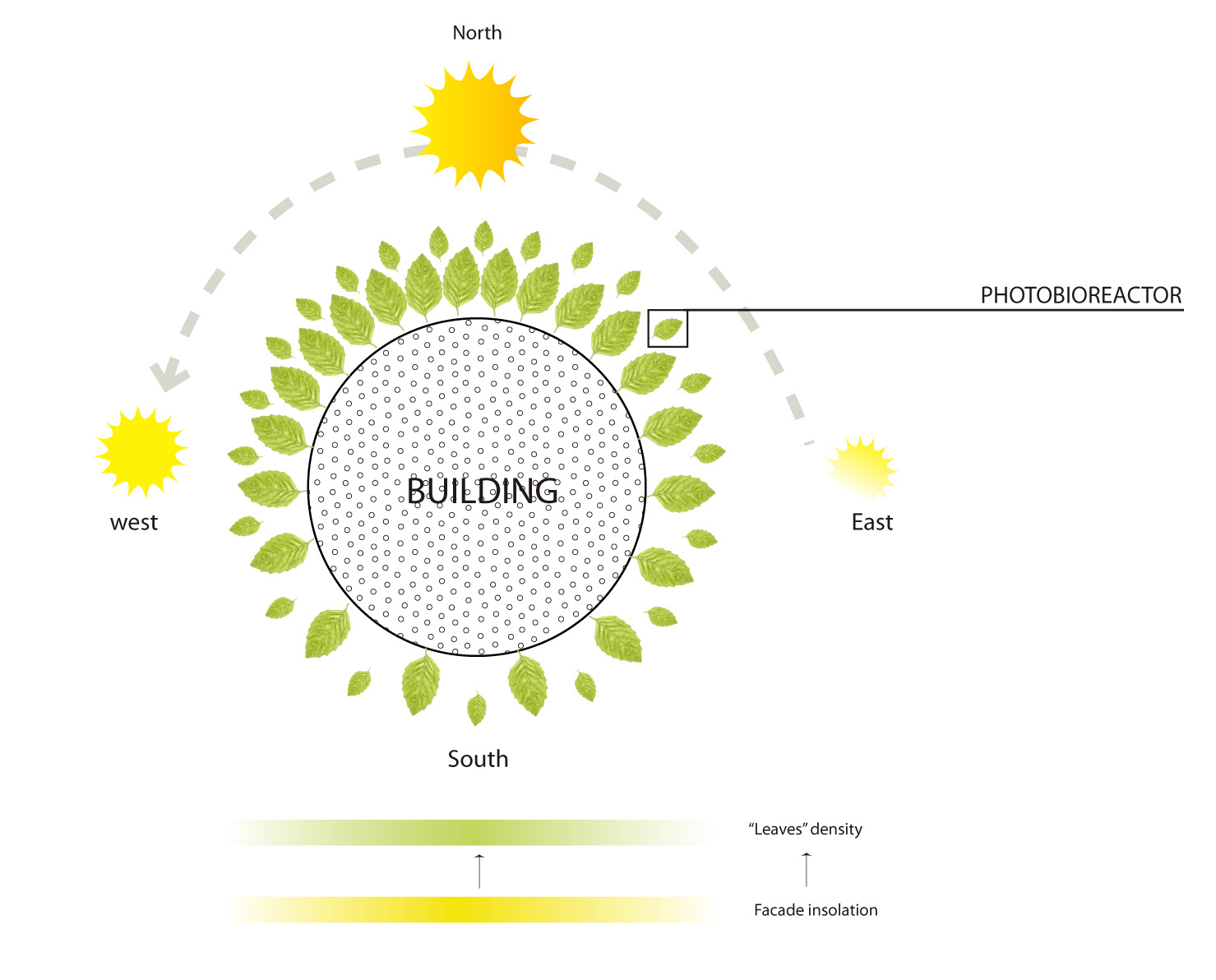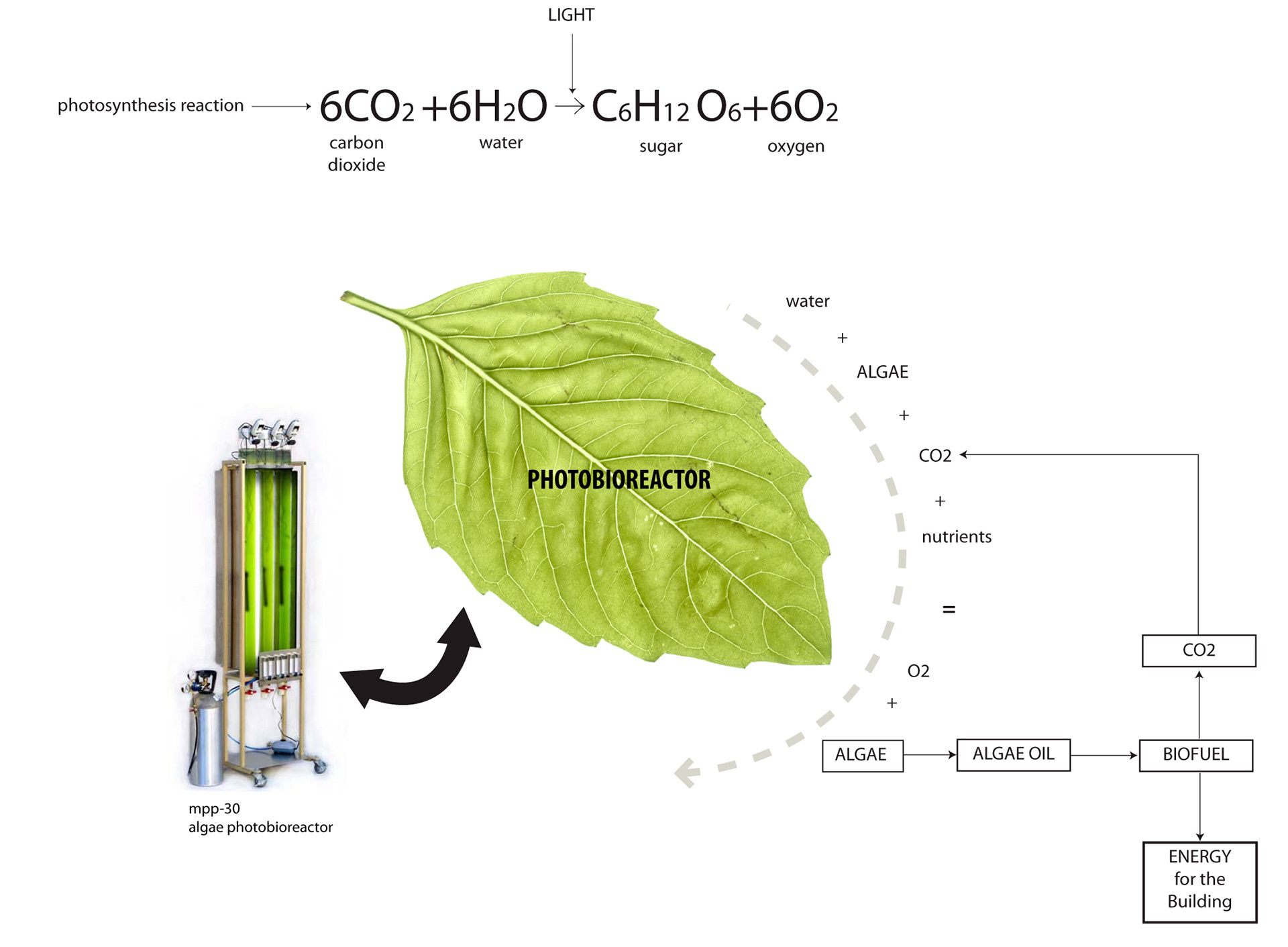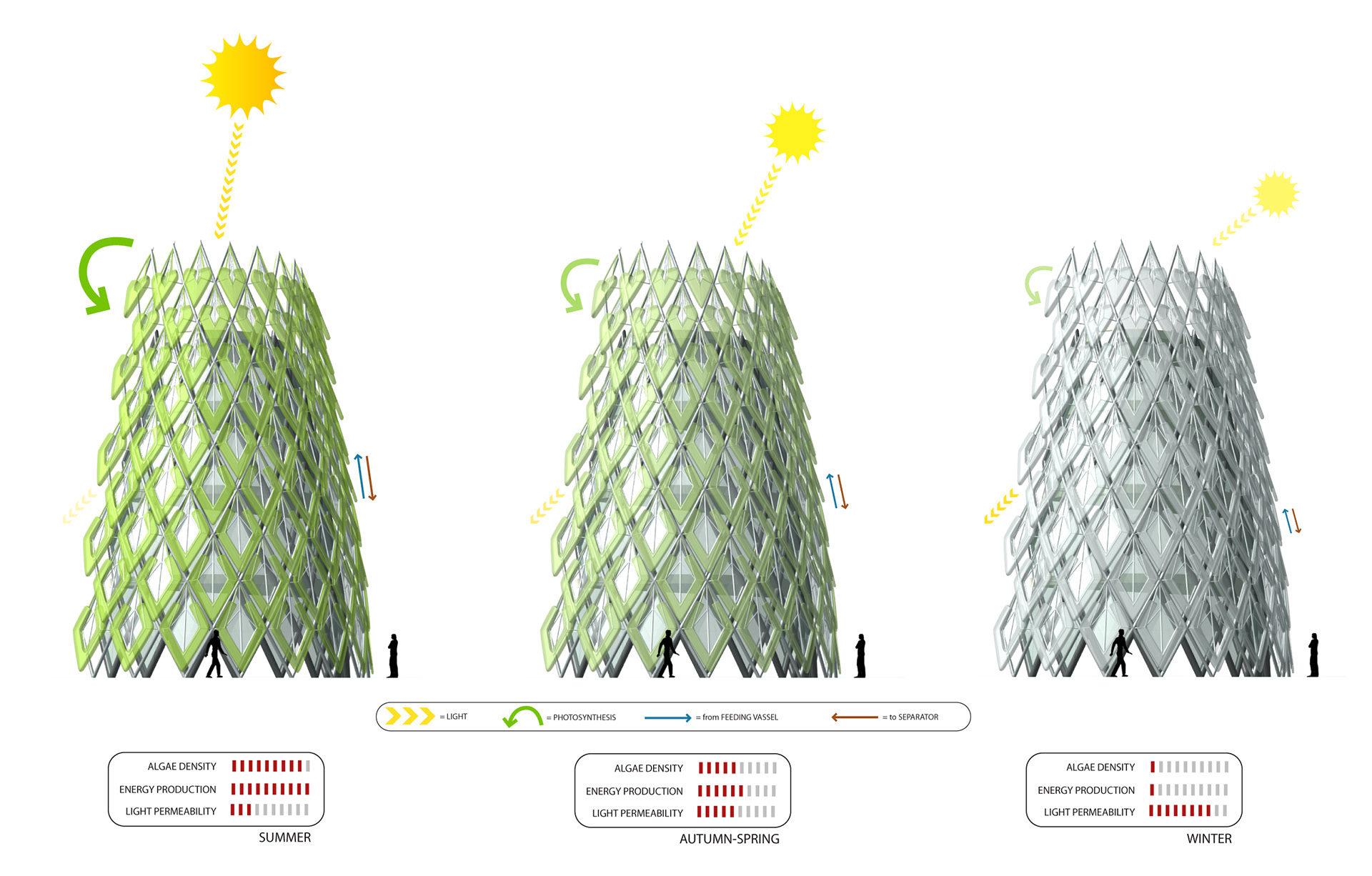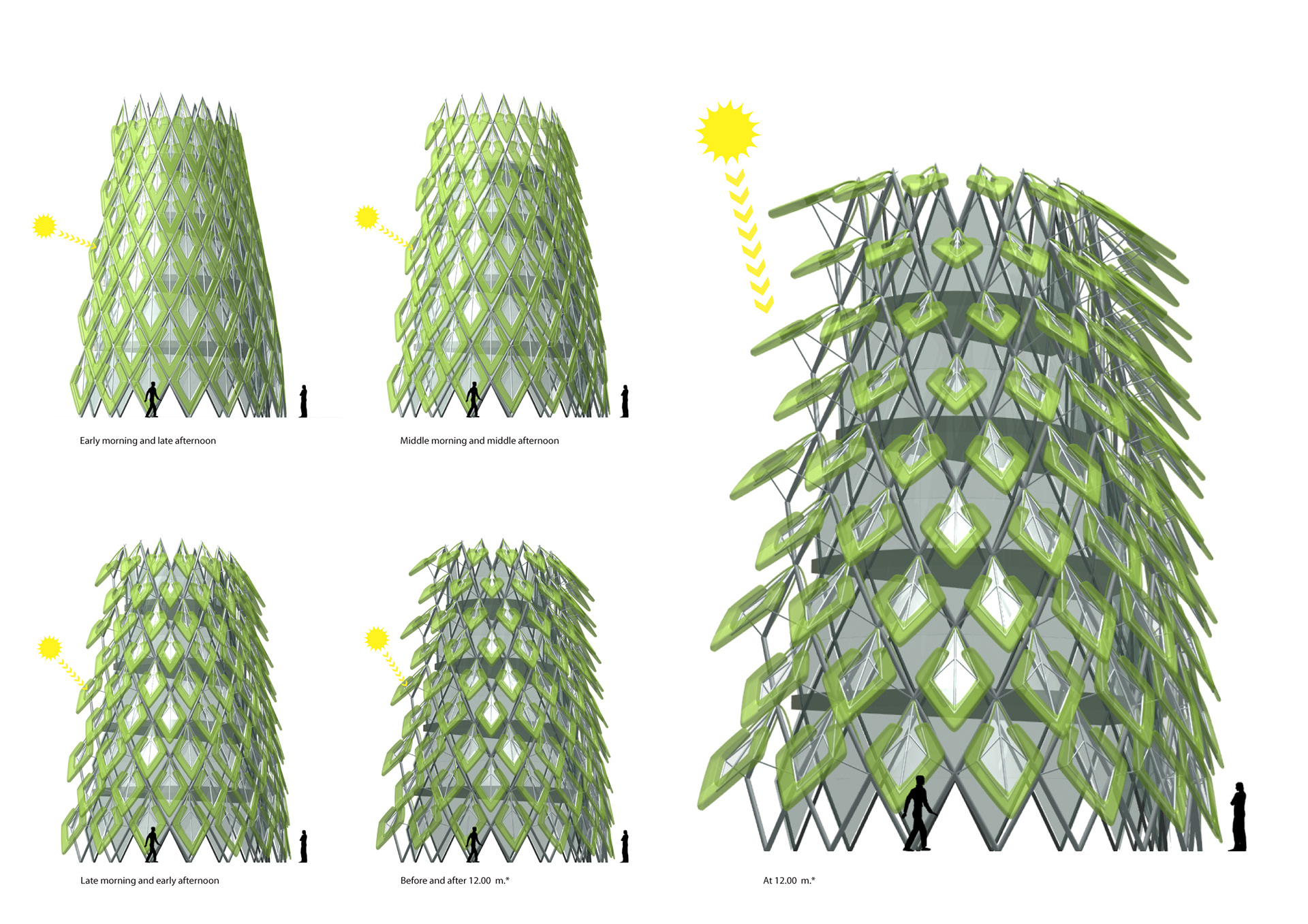Location: Melbourne, Australia
Type: Facade
Status: Concept
Trees are not stand-alone elements but part of an ecosystem. As such they depend on surroundings and natural resources like the sunlight, the quality of air and the composition of soil that they grow in. Our experimental bio-facade proposal for an office tower in Melbourne imitates trees and plants by becoming the main source of energy production for the entire building. The facade system acts as a large-scale photo-bio-reactor transforming a classic facade shading system in a "artificial-leaves-canopy". The canopy protects the building from direct solar radiation, generates energy and absorbs CO2.
Our research focused on the study of various kinds of microorganism utilised in the production of biomass and energy. Particularly, we studied the photo-bio-reactor technology, where a mix of water, nutrients (such as CO2), and micro-algae are exposed, inside clear containers, to solar radiation that, through the photosynthesis, triggers and promotes the production of organic material.


Several experimental plants are demonstrating that this way of generating biomass has enormous potential as an alternative to the production of bio-fuel. Additionally, micro-algae need a great amount of carbon dioxide for their reproduction and this could really help to make the system a closed cycle where all the CO2 produced can be re-injected in the reactor. In this experimental design process the the biggest challenge is how to integrate the photo-bio-reactor technology with the architecture of the building.


In order to achieve an optimal result we started understanding the solar radiation hitting the facade of the tower and its relation with different shapes and curvatures. Density, size and positioning of the bio-reactor elements on the facade are key aspects in order to obtain the best energetic performances of the structure.
The facade reacts to the seasons and to the daily variation of solar radiation, exactly as a tree canopy does. During the colder seasons the facade will produce less biomass because of the lower intensity of the sun and the lower temperatures. The transparency will allow the sun light to filter through the glass facade and to heat the interiors. During summer the production of micro-algae will be at its maximum and the facade will turn into an intense green: this will mean an higher production of bio-fuel and simultaneously a better shading with a consequent reduction in the use of airconditioning.

The facade elements can be adjusted to the optimal sun angle to maximise the production of bio-mass but also to achieve the best performance in terms of shading.


